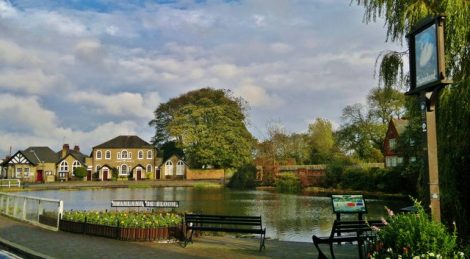5 Great Yorkshire Duck Ponds
Have you ever wondered why there are so many duck ponds in Yorkshire and where they came from? Duck Ponds go back as far as Anglo-Saxon Times and for many centuries provided a water supply for the residents of the village. They are more abundant in East Yorkshire, especially around the Wolds region. This is because the chalk hills here could not hold water on its surface, which meant that clay bottomed holes had to be dug to provide a water supply. Many have survived to this day and are now a great place to feed the ducks and relax. Below are some of the best ponds Yorkshire has to offer and some stories which lay behind them.
1. Swanland

As the name may suggest, the village of Swanland, on the edge of Hull, boasts one of the finest duck ponds in Yorkshire. According to local historians there has been a body of water here since the Iron Age, which has been gradually improved upon through the centuries. Nowadays the pond is 100ft wide and 15m deep in the middle. From the 1970’s the pond became dilapidated, full of green algae, and did not harbour much wildlife. A team of local volunteers set about restoring the pond. Armed with a lottery grant of £9,800, they have made significant improvements to the village pond, including a filter to trap toxic algae, the creation of a reed bed, and extra information about the pond and its ecology. Swanland pond is thriving once again.
2. Grewelthorpe

There were once two duck ponds in the North Yorkshire village of Grewelthorpe, but now only one remains. The duck pond here has been at the centre of the community for centuries, first as a supply of water for the village and now providing a picturesque feature for tourists to the village. It seems as if the pond in Grewelthorpe has caused no end of problems for the villagers over the last century, as these two extracts from the archives show:
“In August 1919 the village pond was almost dry and it was thought desirable that something be done to clean out the sediment. The clerk wrote to the District Council to ask whose duty it was to clean out the pond. The District Council replied that the Parish Council alone was responsible.
The PC said that they did not agree. They stated that on previous occasions the RRDC had cleaned out part of the pond, they had reduced the area and lowered the water by draining which no doubt had caused the threatened nuisance now, also that surface water from the village street washed a deal of sand and mud into to pond and caused it to silt up” – source: http://www.grewelthorpe.org.uk/History/water-for-grewelthorpe
Another problem seemed to be about the pond’s duck population during the 1970s:
“In March 1974 it was thought that there would be little chance of encouraging wildlife to the pond because of the lack of food. In 1975 Miss Inchboard again was worried that any ducks would not survive the winter. But by Winter 1979 there were 60 ducks and the RSPB were contacted for advice on how to keep the numbers down.” Source: http://www.grewelthorpe.org.uk/History/water-for-grewelthorpe
3. Wigginton

If there was a large a population of ducks in Grewelthorpe, then the village of Wigginton near York had a different problem altogether. In 2015 it was reported that unwanted goldfishes had been released into the pond and that they had bred, leading to shimmering shoals of them being seen at the pond. Although this may have looked pretty, scientists warned that goldfish can upset the local ecology, and spread diseases.
Wigginton duck pond is the centrepiece of the village and nearby Haxby.
4. Tickhill

In the small town of Tickhill, just south of Doncaster, lies one of the most impressive duck ponds in the area, It was formerly a mill pond, which has stayed at the centre of the community. Visitors can walk or cycle around the edge of Tickhill pond, see what remains of the town’s medieval castle (now a private residence) and of course feed the many ducks which live here.
5. Bishop Burton

In the heart of East Yorkshire lies the magnificent Bishop Burton duck pond, complete with war memorial in its centre. Known locally as “The Mere,” this pond attracts numerous ducks, geese, swans and sometimes a Grey Heron. The war memorial in the centre of the pond was constructed in 1922 and commemorates the seven men from the village, who perished during World War I.
Nearly the whole of the village is a conservation area and over the main road through the village is another, smaller pond. Bishop Burton is most definitely the duck pond capital of Yorkshire!
Cover picture credit: Horia Varlan flickr creative common

